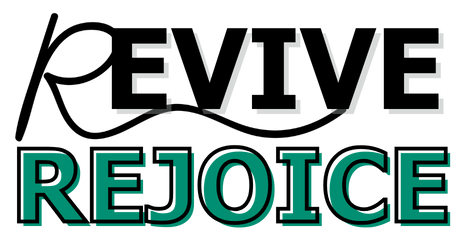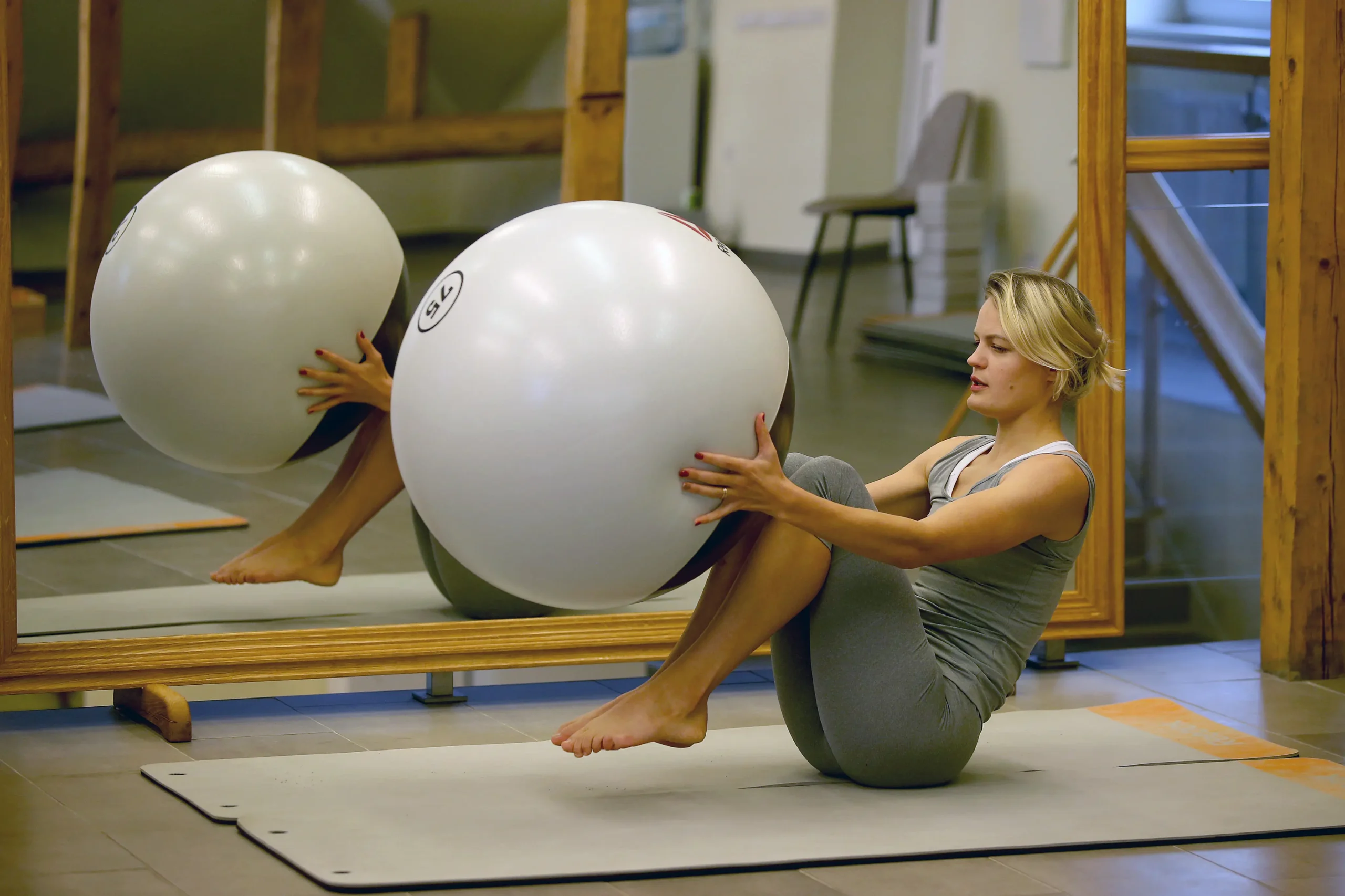Build Abdominal Stability Anywhere: 5 Evidence-Based Moves Using a Pilates Ball
Your core feels like jello when you bend down to tie your shoes.
You’ve tried countless crunches, but your abs still feel weak during real-life movements. Gym memberships cost hundreds while delivering mediocre results. Floor exercises bore you to tears and barely challenge your stability.
Here’s the game changer: five research-proven pilates ball moves that build bulletproof abdominal stability anywhere.
These exercises activate deep core muscles 30% more effectively than traditional methods. You’ll develop functional strength that translates to better posture, reduced back pain, and confidence in every movement.
Why Pilates Ball Training Outperforms Traditional Core Work
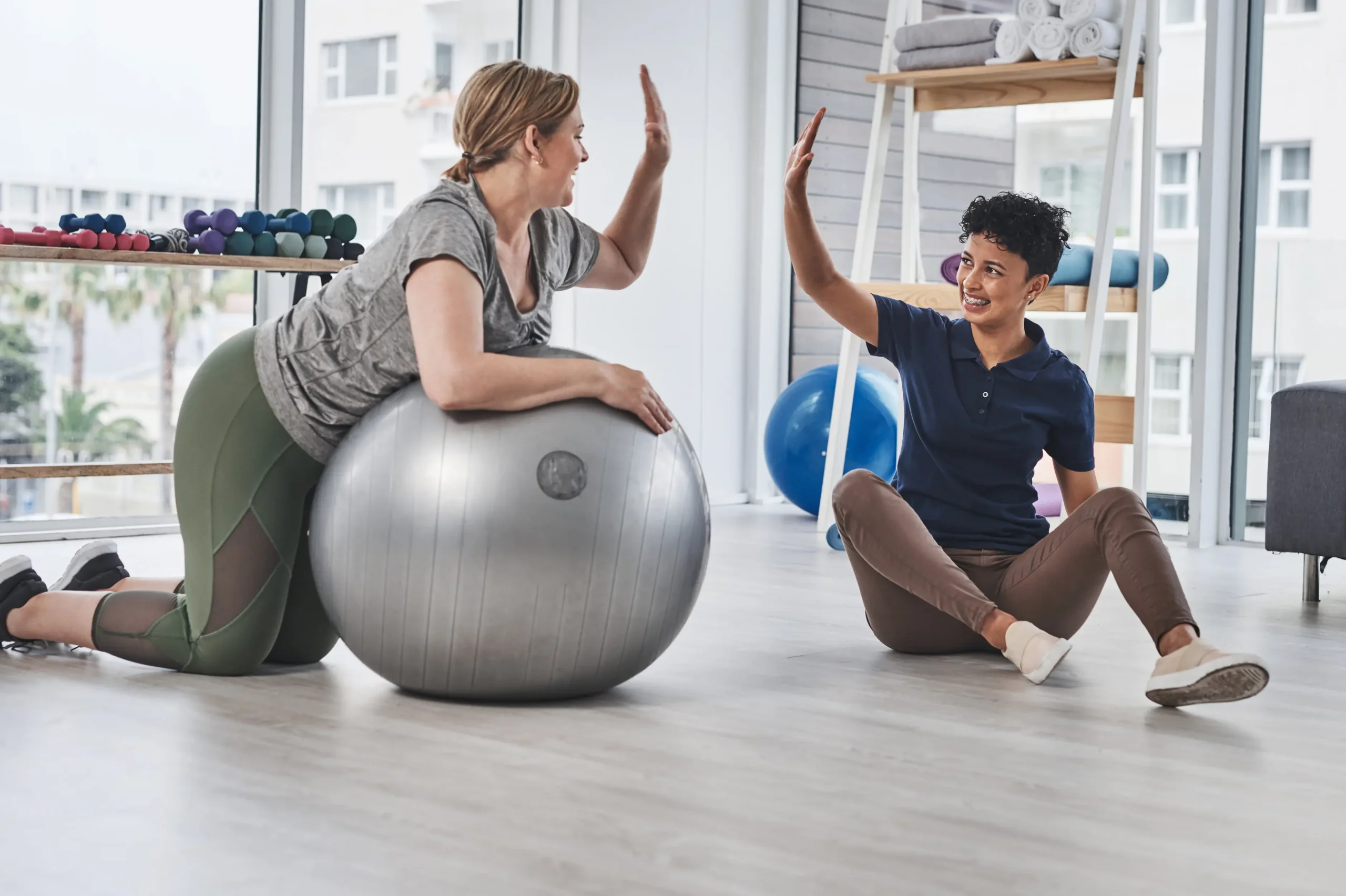
Your regular crunches aren’t cutting it anymore. You do them every day, but your core still feels weak when you bend down to pick up groceries or twist to look behind you while driving.
Here’s the problem with floor exercises: they’re too easy for your muscles. Your body lies flat on a stable surface. Only a few muscles work at a time. This creates strength that doesn’t help you in real life.
Pilates ball exercises change everything. The ball moves under you. Your body fights to stay balanced. This forces deeper muscles to wake up and work harder. Studies show you get 30% more muscle activation when you exercise on unstable surfaces compared to the floor.
The 5 Essential Pilates Ball Core Exercises
These five exercises will transform your core strength faster than any floor routine. Start with basic versions and progress as you get stronger.
🏋️ 5 Essential Pilates Ball Core Exercises
Transform your core strength with these powerful moves
8-12 reps each
45-second rest
12-15 reps each
30-second rest
15-20 reps
30-45 second holds
Exercise 1: Ball Pass (Dead Bug Variation)
This exercise teaches your core to stay stable while your arms and legs move. Most people think they have strong cores until they try this move.
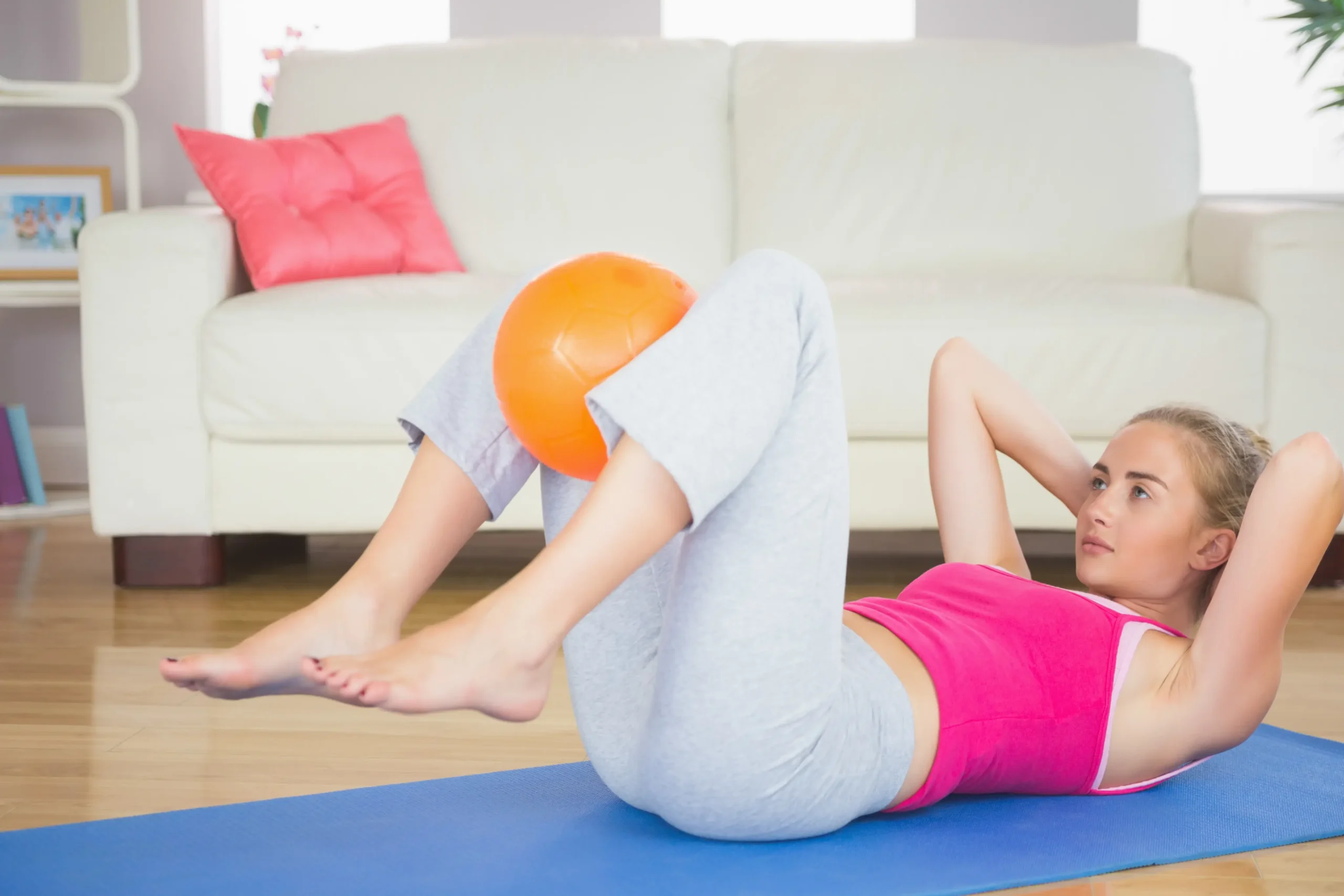
Setup and Starting Position Lie on your back with knees bent at 90 degrees. Hold the ball between your hands above your chest. Press your lower back into the floor. This is your starting position.
Movement Execution Pass the ball from your hands to between your knees. Keep your back flat on the floor the entire time. Lower one leg toward the floor while extending the opposite arm overhead. Return to start and switch sides. The ball helps you maintain proper form.
Common Mistakes to Avoid Don’t let your back arch off the floor. Keep movements slow and controlled. Many people rush through this exercise and miss the core engagement.
Progression Options Start with static holds for 10 seconds. Progress to slow, controlled movements. Advanced trainees can increase tempo while maintaining perfect form.
Exercise 2: Pike Roll-Outs
This exercise builds serious core strength while improving shoulder stability. It’s like a plank and crunch combined into one powerful movement.
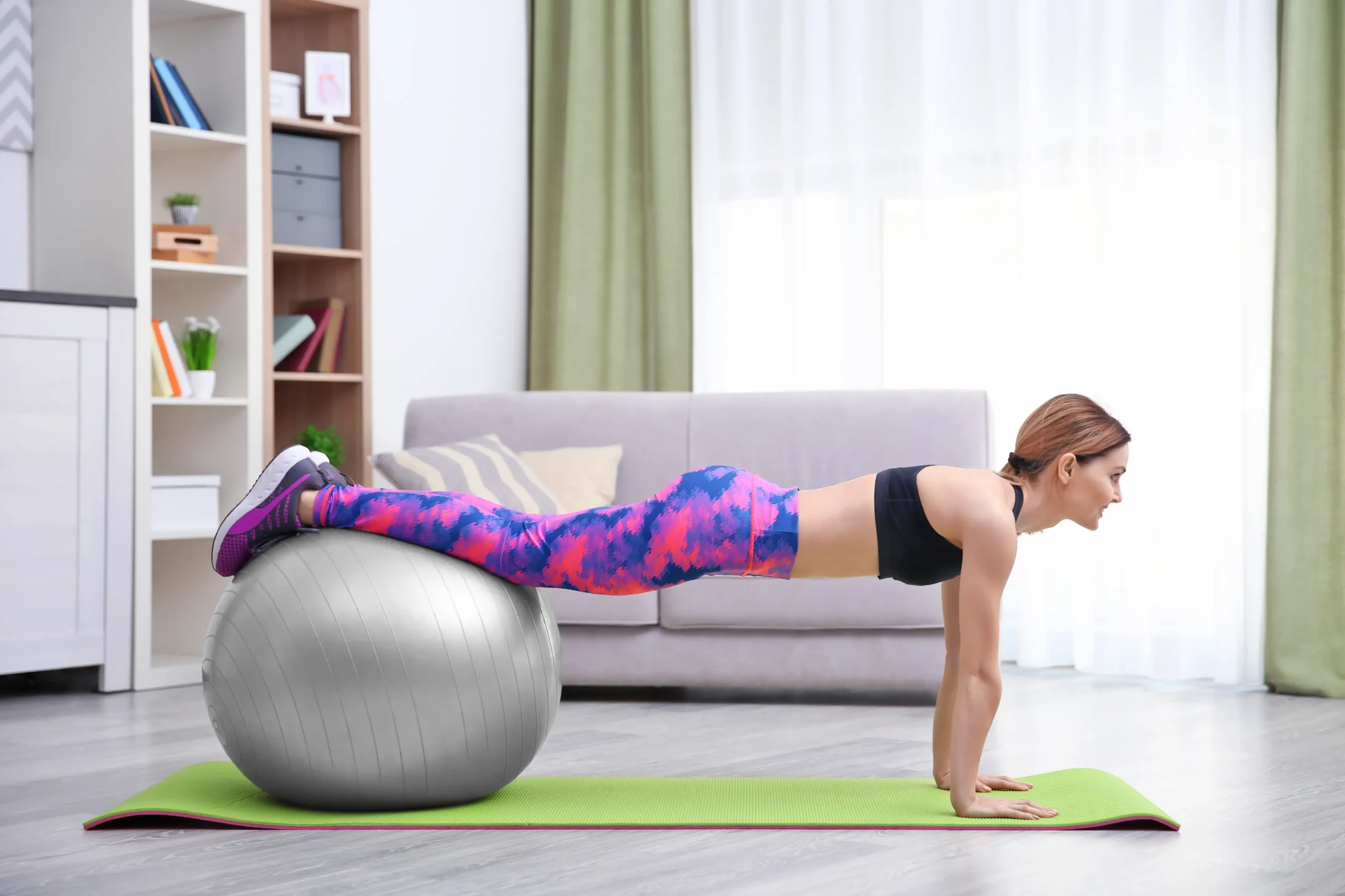
Proper Hand Placement and Body Alignment Start in a plank position with your feet on the ball. Place hands directly under your shoulders. Keep your body in a straight line from head to heels.
Controlled Movement Pattern Roll the ball toward your hands by lifting your hips up and back. Your body forms a pike position. Hold for one second, then slowly roll back to plank. Control the movement in both directions.
Regression Option New to this? Try the wall-supported version. Place the ball against a wall and practice the movement with less instability.
Advanced Variation Ready for a challenge? Try the single-arm version. Remove one hand from the floor and extend it forward during the pike movement.
Exercise 3: Russian Twists with Ball Hold
This exercise targets your obliques and teaches proper rotation patterns. The ball adds resistance and helps you maintain good posture.
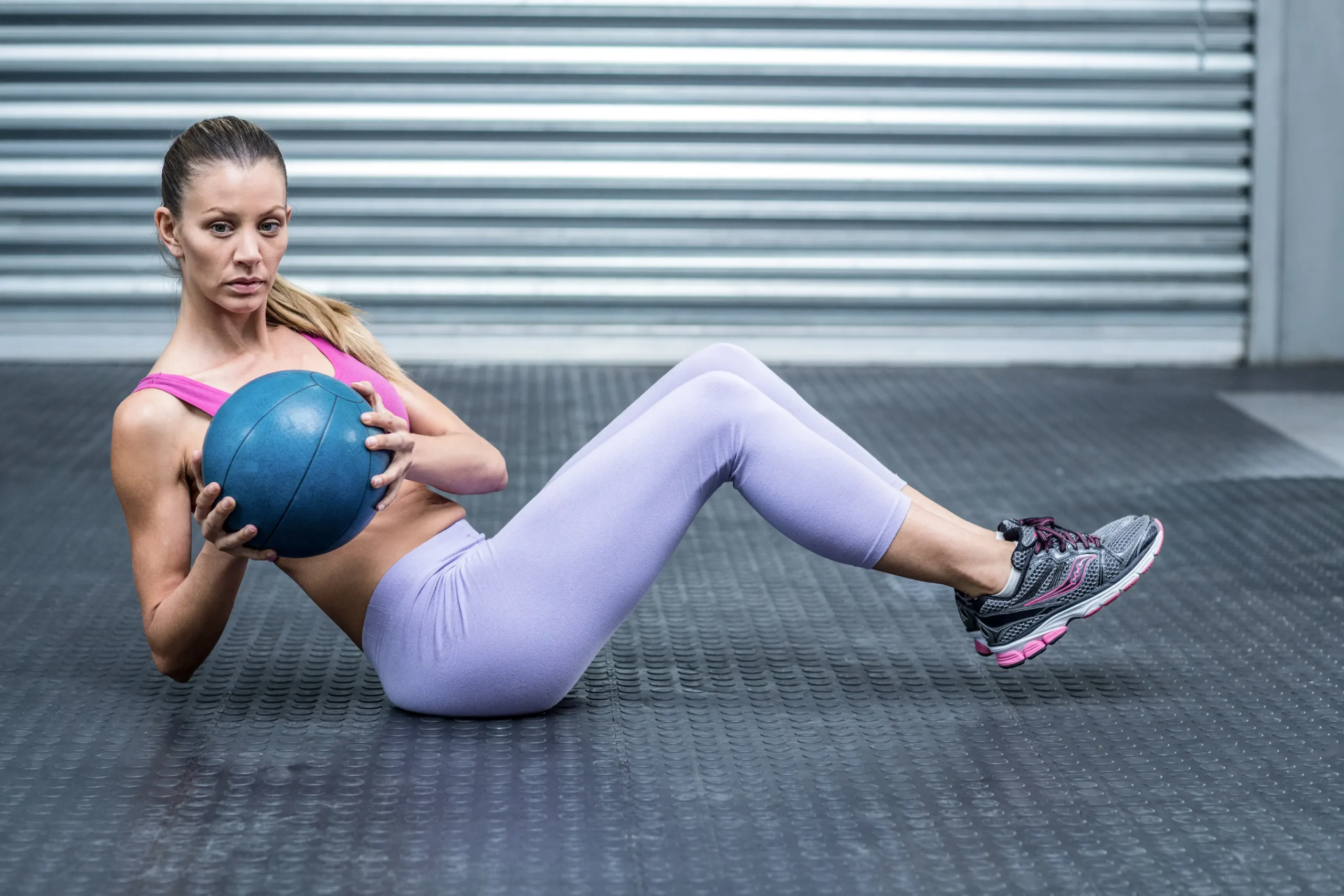
Seated Position Optimization Sit with knees bent and feet flat on the floor. Hold the ball at chest level with both hands. Lean back slightly to engage your core. This is your starting position.
Breathing Coordination with Movement Exhale as you rotate to one side. Inhale as you return to center. Exhale again as you rotate to the other side. Proper breathing helps you maintain core tension.
Modification Options Keep your feet on the ground if you’re a beginner. For more challenge, lift your feet off the floor and balance on your sit bones.
Advanced Challenge Increase hold time at each side rotation. Or add a lean-back element by moving your torso further from your legs.
Exercise 4: Stability Ball Plank to Pike
This dynamic movement combines isometric strength with controlled motion. It’s one of the best exercises for building real-world core power.
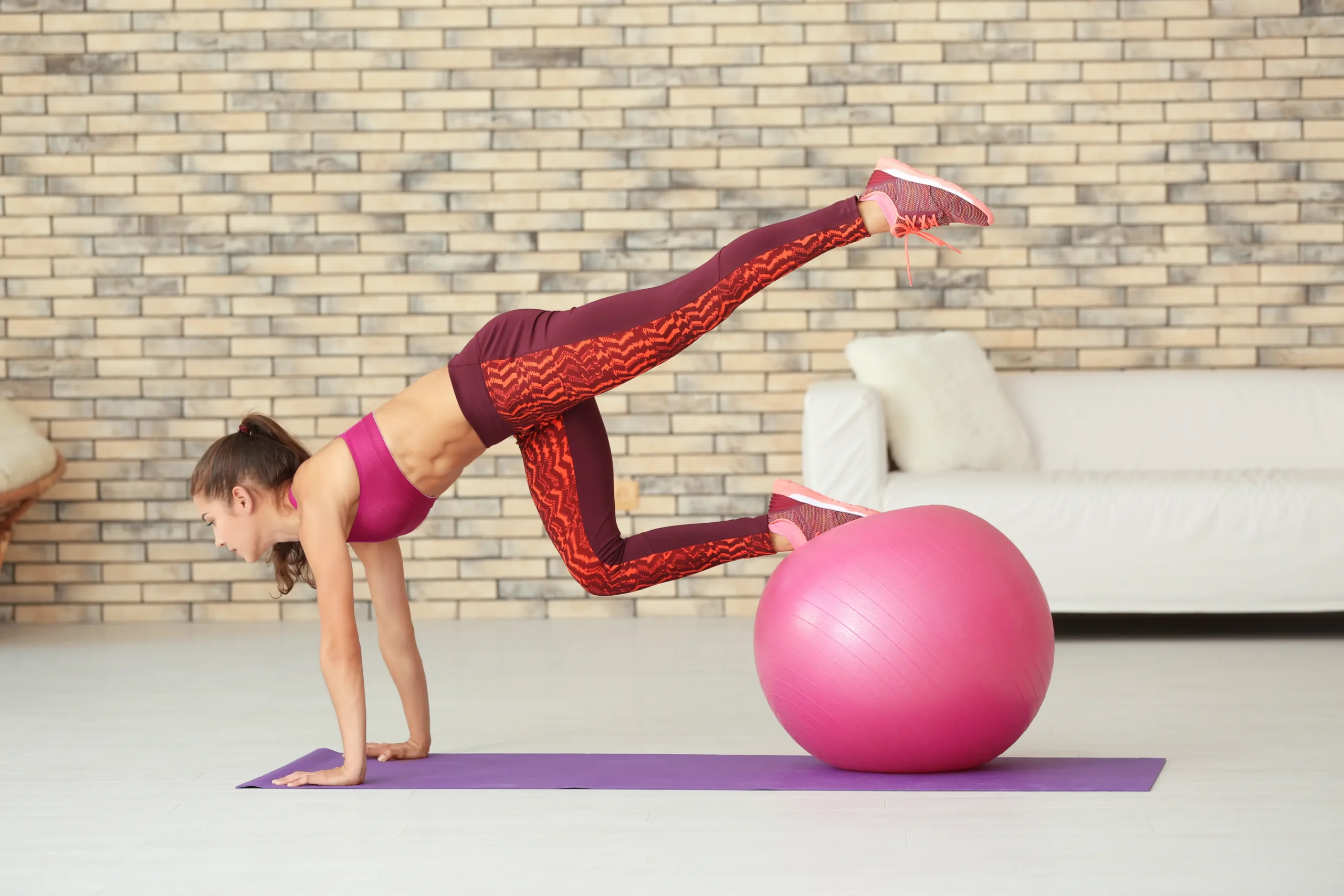
Core Engagement Cues Start in plank position with forearms on the ball. Pull your belly button toward your spine. Squeeze your glutes. Keep your neck in line with your spine.
Hip Hinge Movement Pattern Push the ball away from you while lifting your hips toward the ceiling. Your body forms an inverted V shape. This teaches proper hip movement while your core stays rock solid.
Balance and Control Focus The ball wants to roll away from you. Fight this by maintaining constant pressure through your forearms. This trains your core to stabilize against external forces.
Progression Sequence Master the static plank hold first. Then add small pike movements. Finally, work up to full range pikes with controlled movement in both directions.
Exercise 5: Ball Squeeze Crunches
This exercise connects your inner thighs to your deep core muscles. Most people never train this connection, which is why their core strength doesn’t translate to daily activities.
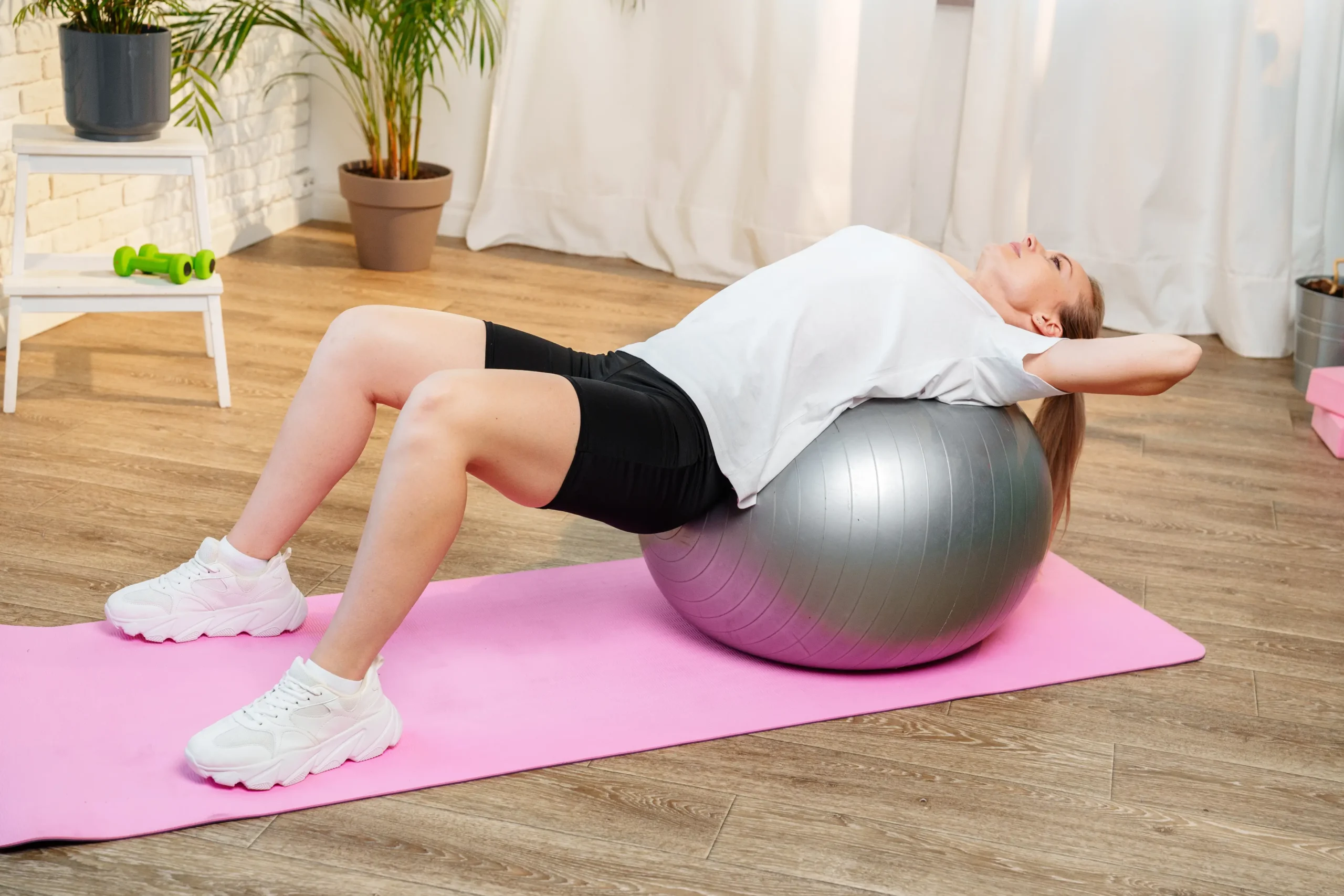
Inner Thigh and Deep Core Connection Lie on your back with knees bent. Place the ball between your knees. Squeeze the ball while performing a crunch. This activates deep stabilizing muscles that regular crunches miss.
Controlled Lifting Technique Lift your shoulder blades off the floor while squeezing the ball. Hold for two seconds at the top. Lower slowly and maintain ball pressure throughout the movement.
Neck and Shoulder Positioning Keep your chin slightly tucked. Don’t pull on your neck with your hands. Let your core do the work of lifting your shoulders off the ground.
Variation Options Try different ball placement points. Between your knees targets inner thighs. Between your ankles challenges your lower core. Between your hands works your chest and arms too.
Start with these five exercises three times per week. Master the basic versions before moving to advanced variations. Your core will be stronger, more stable, and ready for whatever life throws at you.
Creating Your 15-Minute Home Core Workout
🏋️♀️ Ball Squeeze Crunches & 15-Minute Workout
Your Complete Guide to Effective Core Training
💪 Ball Squeeze Crunches: Step-by-Step
Setup Position
Lie on your back with knees bent. Place ball between knees and press lower back to floor.
Squeeze & Lift
Squeeze the ball while lifting shoulder blades off the floor. Keep chin slightly tucked.
Hold & Lower
Hold for 2 seconds at the top. Lower slowly while maintaining ball pressure.
Repeat
Control the movement in both directions. Let your core do all the work.
🎯 Ball Placement Variations
Between Knees
Targets inner thighs and deep core connection
Between Ankles
Challenges lower core and leg stability
Between Hands
Works chest, arms, and upper core
⏰ Your 15-Minute Workout Structure
Warm-Up
Roll ball under back, gentle extensions, light torso twists
Main Exercises
Pick 3 exercises • Start easy • Progress to challenging
Cool-Down
Back extensions over ball, gentle spinal twists
📊 Rep Ranges by Fitness Level
🌱 Beginner
2 sets
8-12 reps each
30-45 sec rest
🔥 Intermediate
3 sets
12-15 reps each
30 sec rest
💪 Advanced
3 sets
15-20 reps or
30-45 sec holds
🎯 Quick Success Tips
You want strong abs but only have 15 minutes. Good news: that’s enough time to build serious core strength with pilates ball exercises.
Start with a 2-3 Minute Warm-Up Roll the ball gently under your back while lying down. This loosens tight muscles. Do 10 gentle back extensions over the ball. Add some light torso twists while holding the ball. Your muscles need to wake up before the real work begins.
Exercise Sequence and Flow Pick three exercises from the five we covered. Start with the easiest one when your form is fresh. Move to harder exercises as you warm up. End with the most challenging exercise when your core is fully activated.

Rep Ranges by Level Beginners should do 2 sets of 8-12 reps for each exercise. Rest 30-45 seconds between sets. Intermediate trainees can handle 3 sets of 12-15 reps with 30-second rest periods. Advanced users should aim for 3 sets of 15-20 reps or 30-45 second holds for static exercises.
Cool-Down and Stretching Spend 2-3 minutes stretching your core and back. Drape yourself over the ball in a gentle back extension. Hold for 30 seconds. Do some gentle spinal twists while sitting on the ball. This prevents soreness and keeps your back healthy.
This simple structure turns five exercises into a complete home core workout routine.
Common Mistakes and How to Avoid Them
Most people mess up ball exercises before they even start. Here are the mistakes that kill your progress and how to fix them.
🏃♀️ Pilates Ball Mistakes That Kill Your Progress
Avoid these common errors to get maximum results from your core workouts
🎯 Choose the Right Ball Size
Wrong Ball Pressure
Should compress ~1 inch when pressed firmly. Too hard = dangerous. Too soft = no challenge.
Rushing Movements
Slow movements build 30% more strength than fast ones. Quality always beats quantity.
Breath Holding
Proper breathing increases core activation by 25%. Exhale on effort, inhale on release.
Progressing Too Fast
Master 15 perfect reps before advancing. Your ego wants speed, your body needs time.
⏱️ Perfect Movement Timing
Move In
Hold
Return
🚨 Stop If You Experience
“Perfect form with easier exercises beats sloppy form with harder ones. Your core will thank you for taking time to do things right.”— Core Training Principle
Getting Ball Size Wrong Your height determines the right ball size. If you’re under 5’4″, use a 55cm ball. Between 5’4″ and 5’10”? Go with 65cm. Taller than 5’10”? You need a 75cm ball. When you sit on the properly sized ball, your hips and knees should form 90-degree angles.
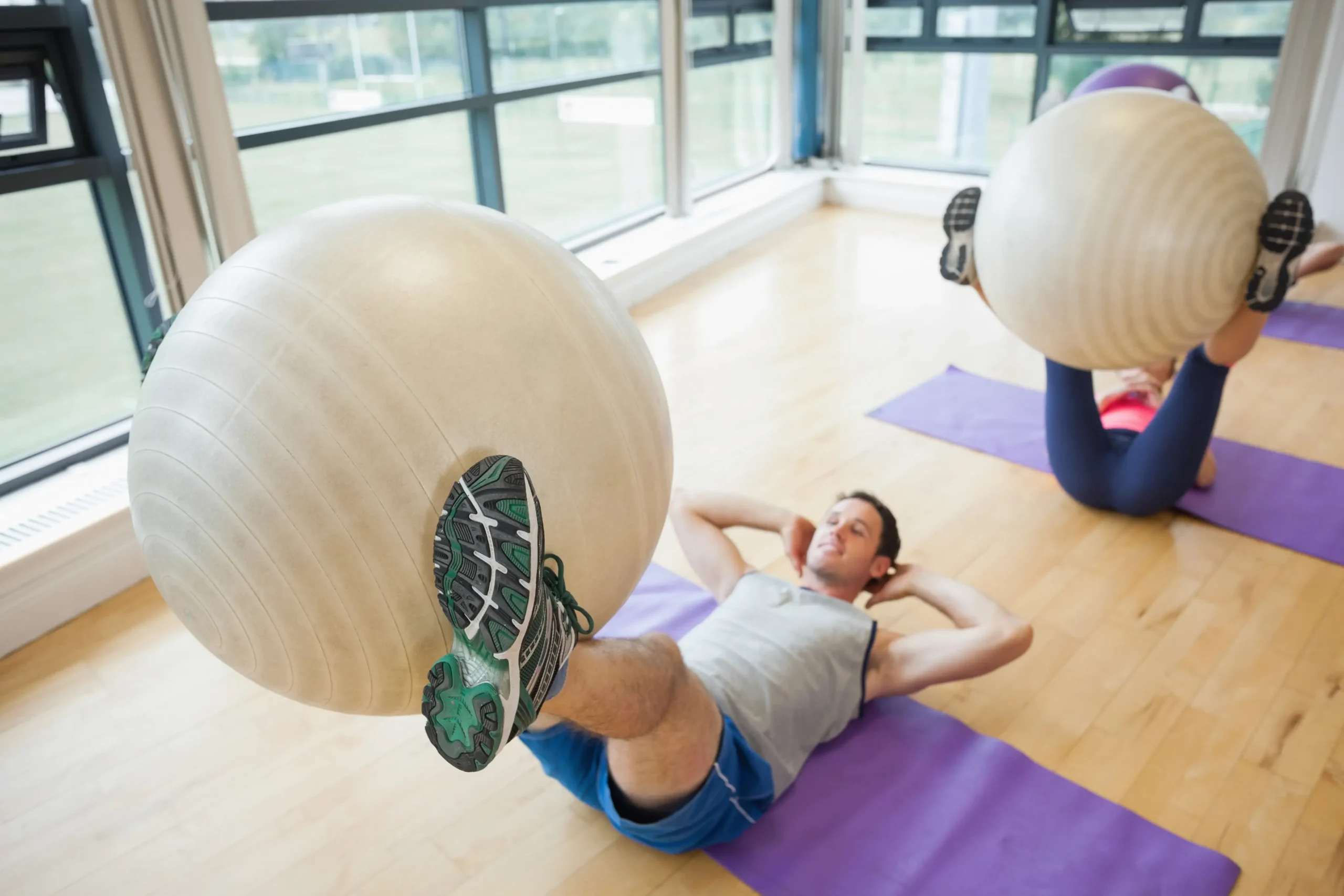
Overinflating or Underinflating Your Ball A rock-hard ball is dangerous and unstable. An under-inflated ball won’t challenge your muscles enough. The ball should give slightly when you press it with your palm. You should be able to squeeze it about one inch with firm pressure.
Rushing Through Movements Slow movements build more strength than fast ones. Take 2-3 seconds to move into each position. Hold for 1-2 seconds. Take another 2-3 seconds to return to start. Quality beats quantity every time.
Ignoring Your Breathing Holding your breath kills your performance. Exhale during the hardest part of each exercise. Inhale during the easier phase. This keeps oxygen flowing to your muscles and helps you maintain proper core tension.
Progressing Too Fast Master basic versions before trying advanced moves. Can you do 15 perfect reps with good form? Only then should you add difficulty. Your ego wants to rush. Your body needs time to adapt.
Signs You’re Doing It Wrong Your back hurts during or after exercises. You feel the work in your neck instead of your core. You can’t maintain good form for the full set. The ball keeps rolling away from you. If any of these happen, slow down and focus on proper technique.
Remember: perfect form with easier exercises beats sloppy form with harder ones. Your core will thank you for taking time to do things right.
Build Your Strongest Core Yet
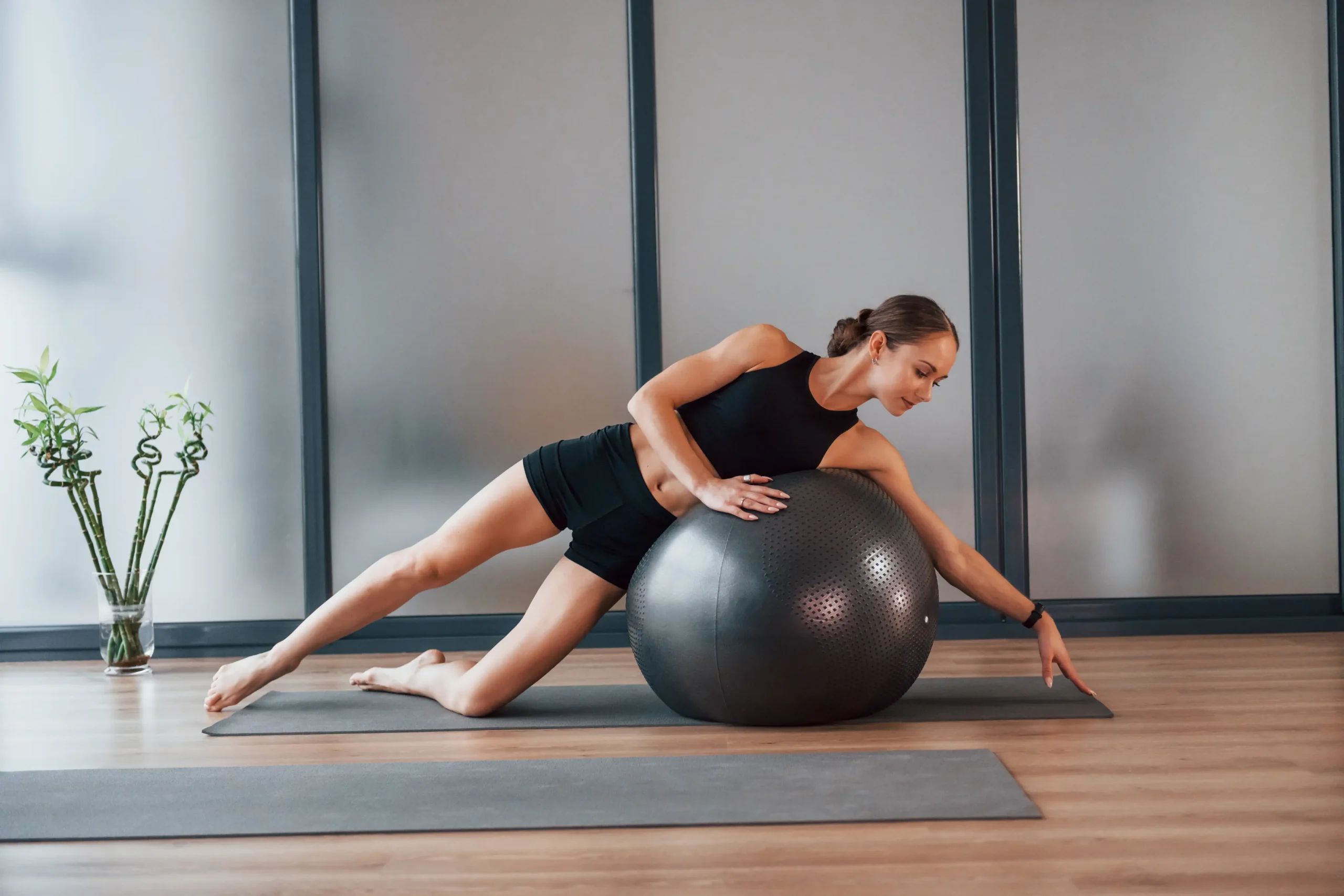
Effective core training doesn’t need expensive gym memberships or fancy equipment. These five pilates ball core exercises give you everything you need to build real strength at home. The ball costs $15 and lasts for years. Your gym membership costs that much every two weeks.
Your Next Steps Are Simple Start with form over intensity. Pick two exercises that challenge you but don’t cause pain. Master those before adding more. Consistency beats perfection every time. Three 15-minute sessions per week will change your core strength faster than one hour-long workout.
Track your progress through improved balance and endurance, not just reps. Can you hold positions longer? Do you feel more stable during daily activities? These signs matter more than numbers on paper.
Take Action This Week Start with just 10 minutes, three times this week. Choose two exercises that feel challenging but doable. Commit to mastering proper form before adding intensity or new movements. Your future self will thank you for building this foundation right.
Strong cores aren’t built in a day. But they start with your first pilates ball core exercises session. Get your ball, pick your exercises, and begin building the core strength you’ve always wanted.

